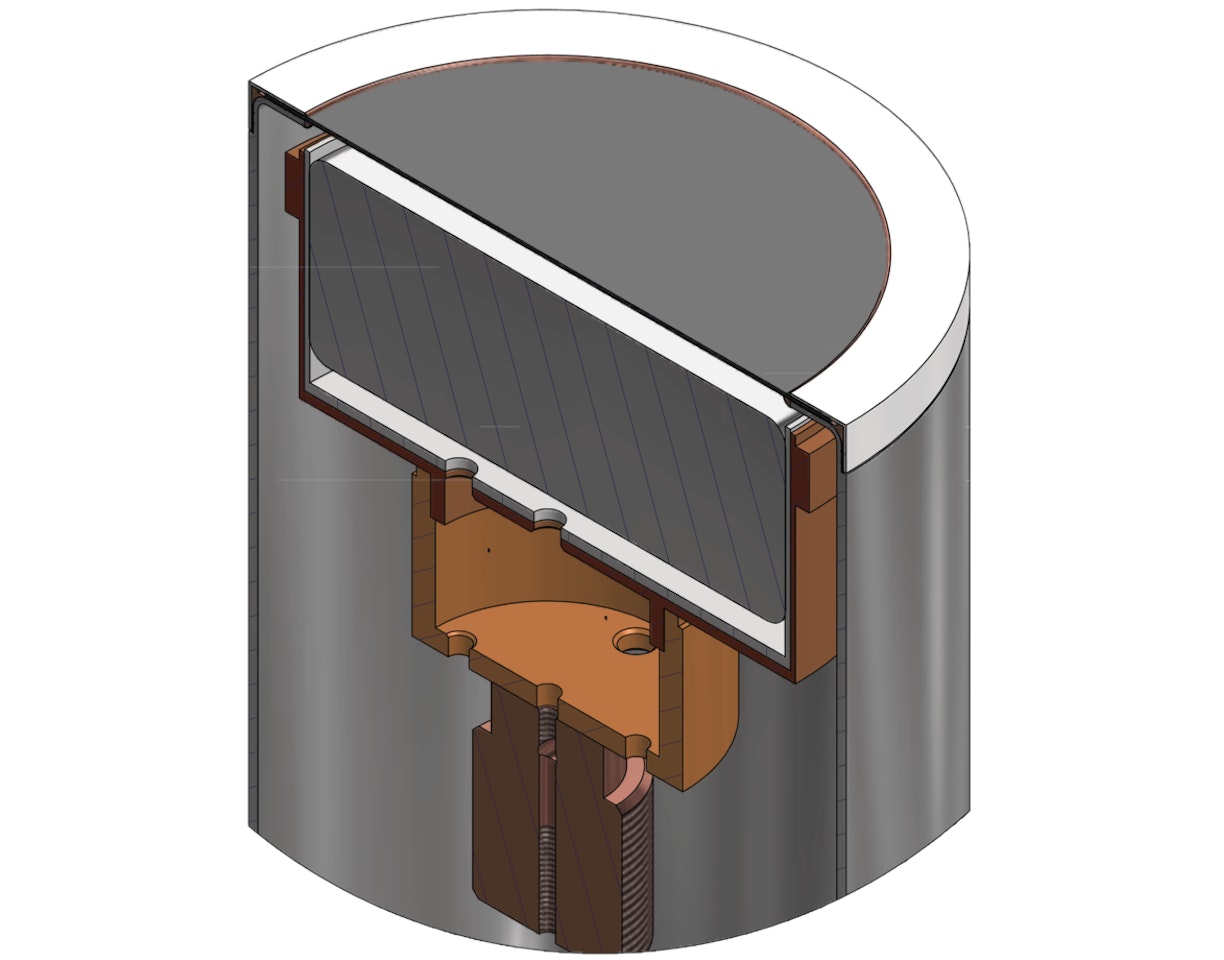
BEGe™ Broad Energy Germanium Detectors
The Mirion BEGe Broad Energy Ge Detector covers the energy range of 3 keV to 3 MeV like no other.
The Mirion BEGe Broad Energy Ge Detector covers the energy range of 3 keV to 3 MeV like no other.
Reverse Electrode Coaxial Ge Detectors
The reverse-electrode (REGe) detector is similar in geometry to other coaxial germanium detectors with one important difference.
The reverse-electrode (REGe) detector is similar in geometry to other coaxial germanium detectors with one important difference. The electrodes of the REGe detector are opposite from the conventional coaxial detector in that the p-type electrode, (ion-implanted boron) is on the outside, and the n-type contact (diffused lithium) is on the inside. There are two advantages to this electrode arrangement – window thickness and radiation damage resistance.
The ion-implanted outside contact is extremely thin (0.3 μm) compared to a lithium-diffused contact, enabling the REGe detector to cover a broad energy range from 3 keV up to several MeV. REGe detectors are normally equipped with a carbon composite window which is robust and provides excellent transmission to below 10 keV. Beryllium or aluminum windows are also available. Aluminum is preferred when there is no interest in energies below 20 keV and improved ruggedness is desired. Beryllium should be selected to take full advantage of the low energy capability (down to 3 keV) of the REGe detector.
It has been found that radiation damage, principally due to neutrons or charged particles, causes hole trapping in germanium. Unlike the case of the conventional coaxial detector, holes are collected by the outside electrode of the REGe detector. Since a much greater amount of the active detector volume is situated within a given distance, ∆ R, of the outside contact, than of the inside contact (Volume ≈ R2) it follows that, on average, holes have less distance to travel if they are attracted to the outside contact than if they are attracted to the inside contact. With less distance to travel, they are less likely to be trapped in radiation damaged material. The extent of the improved resistance to radiation damage depends on other facts, of course, but experimental evidence suggests that the REGe detector may be 10 times as resistant to damage as conventional coaxial germanium detectors.
Do you have a question or need a custom solution? We're here to help guide your research.
Looking for Services or Support?
We're here to help.